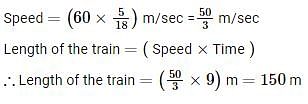UPPSC Prelims (GS 2) Mock Test - 4 (CSAT) - UPPSC (UP) MCQ
30 Questions MCQ Test UPPSC Mock Test Series 2025 - UPPSC Prelims (GS 2) Mock Test - 4 (CSAT)
A sum of money is to be distributed among Abhay, Bina, Chandan and Divya in the proportion of 5 ∶ 2 ∶ 4 ∶ 3. If Chandan gets ₹ 500 more than Divya, what is Bina's share?
Which pairs help participants to develop interpersonal skills, confidence, communication, and assertiveness?
Direction: Transformation of sentence (Active-Passive):
Are they selling the books here? Are the books _____ by them here?
Statement-I: One of the sides of the triangle measures 20 meters.
Statement-II: The area of the triangle is 990 m2.
Q. What is the length of the hypotenuse of a right-angled triangle?
In the classical Greek and Roman world, which of the following is true regarding the perception of Indian textiles and garments?
During colonial India, how were Indian street dogs further marginalized according to the passage?
By selling a table for Rs. 450, Ankit gains 25%. During a clearance sale, he allows a discount of  on the marked price. What is his gain percent during the sale?
on the marked price. What is his gain percent during the sale?
Direction: Select the correct antonym for the given word:
Frugal
An exam is conducted on the first Sunday of August every year. In which of the following years will the exam be held on the same date as that in 2016, if 7 August 2016 is the first Sunday of August in 2016?
A train running at the speed of 60 km/hr crosses a pole in 9 sec. What is the length of the train?
निम्नलिखित में से कौन-सा युग्म सही सुमेलित नहीं है?
Direction: In the following question, out of the four options, choose the one which best expresses the meaning of the given word.
ARTICULATE
Prameet and Rohit start together from a particular point in the opposite direction on a motorcycle. The speed of Prameet is 25 km/hr and Rohit is 35 km/hr. What will be the distance between them after 15 mins?
If the day before yesterday was Saturday, then what will be the day after tomorrow?
दो समान शब्दों के मध्य लगाया जाने वाला चिन्ह है:
Given below are two statements - one is labelled as Assertion (A) and the other is labelled as Reason (R):
Assertion (A): No social activity is possible without communication.
Reason (R): Communication plays a vital role in our daily life.
In light of the above statements, choose the correct option:
Measures of the two angles between hour and minute hands of a clock at 7′O clock are:
इनमें से कौन सा शब्द, समूह से भिन्न है?
How many persons have more height than C?
In a classroom, a communicator’s trust level is determined by:
Harish started his journey at 18 : 40 and finished at 22 : 30. The time taken in completing the journey is:
In a vocal music competition, Meeta's marks are less than Sita's. Geeta's marks are more than Sita's but less than Seema's. Veena's marks are less than Meeta's. Who is in third place?
Correct the following equation by interchanging the two signs.
682 × 36 ÷ 6 × 12 - 36 + 42 = 49098
ABC, who is pursuing MSc. has chosen to study ‘modern Indian literature’ from the Language department under CBCS system. Which course does Modern Indian Literature represent?
|
2 docs|37 tests
|



 [using formula of area of the triangle]
[using formula of area of the triangle]


















